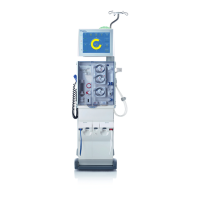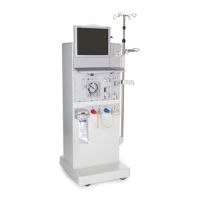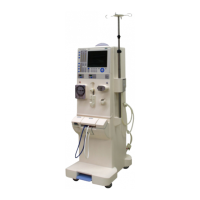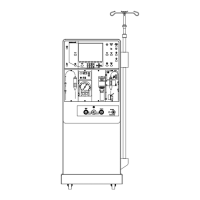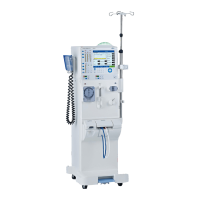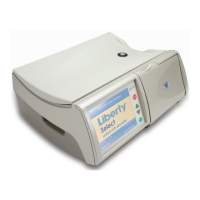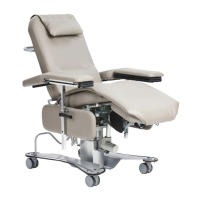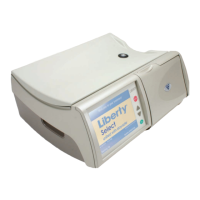Chapter 5: Alarm processing
Fresenius Medical Care multiFiltrate IFU-EN-UK 15A-2015 5-3
5.2.2 New alarm scheme
This scheme is based on assigning priority levels to alarm situations.
Priorities correspond to the present danger level and the time before a
potential hazard occurs, according to the following table:
The signals and tone sequences corresponding to the various priorities
are assigned uniformly to a range of medical device groups: As a result,
all dialysis devices will, as a rule, generate a uniform set of alarm
signals.
Basic assignment The assignments of alarm condition, priority, and device response are
defined as follows:
High priority:
Red flashing operating status indicator and repeated tone sequence of
10 beeps.
Medium priority:
Yellow flashing operating status indicator and repeated tone sequence
of 3 beeps.
Low priority:
Yellow steady operating status indicator and repeated tone sequence of
2 beeps.
The system also offers the option of providing information ("Warning"):
Green flashing operating status indicator with repeated tone and
isolated information tones.
In this way, each alarm scenario is assigned a priority that defines the
alarm response of the device.
5.3 High-priority alarm conditions
Since critical alarm situations can cause the machine to be placed in
Safe Mode (halting treatment), alarms with high priority are only
triggered in exceptional cases, where a potential hazardous condition
persists even following alarm response.
Possible result of
failing to respond to
the cause of the
alarm condition
Start of potential injury
Instant Soon Delayed
Death or
irreversible injury
High
priority
High
priority
Medium
priority
Reversible injury High
priority
Medium
priority
Low
priority
Minor injury or
discomfort
Medium
priority
Low
priority
Low
priority or no
signal
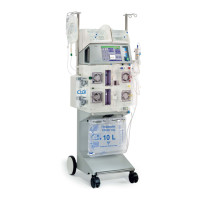
